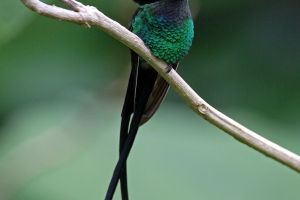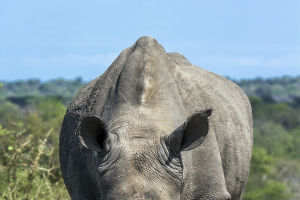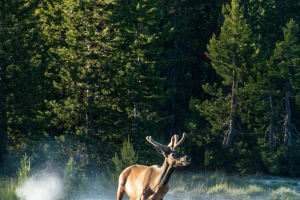The white-tailed deer is a large herbivore of the genus Lacertidae. It got its name from the white bottom of the tail that turns up when it runs.
White-tailed deer live in forests. Good swimmer, able to swim over 6-14 kilometres of water. When there is heavy snow or food shortage, gather around 4-5 animals in a suitable habitat and food abundance. Feed on grass, shrubs, shoots, fungi, nuts, and moss. Eat a variety of foods, such as leaves, bark, and fruit that fall to the ground. Good at swimming.
It is one of the most widespread deer in the world, ranging from the forests of eastern Canada to the forests of the eastern United States, the Florida Peninsula, Mexico, Central American countries, and northern Peru.
White-tailed deer get their name from the white soles of their tails that appear when they run. The body length is 1.34-2.06 meters, the shoulder height is 0.92 meters, and the tail length is about 10-28 centimetres. The coat of a white-tailed deer is reddish in the summer and grey in the winter. The horn is hollow and weighs much less than it looks.
Antlers and horns look similar, but they are made of different tissues and grow in different ways. The surface is skin, which is shed and regrown every year. Velvet grows from two spherical projections on the frontal bone at the tip of the deer's skull.
Just as plants sprout from the ground, velvet antlers usually split up, gaining weight with each new sprig. Horns grow from the bottom up, usually throughout an animal's life. The horn is hollow and weighs much less than it looks. In addition, angles generally bend somewhat, but never branch.
White-tailed deer inhabit a wide range from northern temperate to subtropical, semi-arid environments, tropical rainforests, and other equatorial, deciduous broad-leaved forests, mixed pine-oak forests, secondary forests, scrub, forest and grassland transition zones, in northern mountainous regions, more southern latitudes and lower elevations, arid regions, and Andean countries.
The white-tailed deer is a very adaptable species, and almost all ecological types can meet its survival needs, including grassland, grassland, mountain, forest, coniferous forest, tropical rainforest, desert, and even in farmland woodland. Living in broadleaf forests in the United States, in the cold forests of northern Canada, on the arid hillsides of Mexico, and in the hot and humid conditions of Central and South America, white-tailed deer can adapt to a variety of forest habitats.
White-tailed deer are the most vigilant and timid of the deer species. They typically swish their tails from side to side when spooked and fleeing. They are very agile and can travel at speeds of up to 50 kilometres per hour through the intricate terrain of the forest. White-tailed deer are also strong swimmers, often entering large streams and lakes to escape predators or insects or to visit islands.
Their territory is usually small, usually a square kilometre or less. White-tailed deer do not migrate during the winter but forage within their territory during periods of heavy snow. They are known for repeatedly using the same paths while foraging but do not lie down during the day in areas they have previously used.
White-tailed deer do take great care to keep their young away from predators. While foraging, females leave their young in dense vegetation for about four hours at a time. While waiting for the female to return, the fawn lay flat on the ground, neck outstretched, well camouflaged on the forest floor.
White-tailed deer get their name because they cause road accidents. The real reason for all this is the abundance of white-tailed deer. There are so many white-tailed deer out there, they're just hanging out on the highway. There are two reasons for this: too much maintenance and the decline of cougars.


